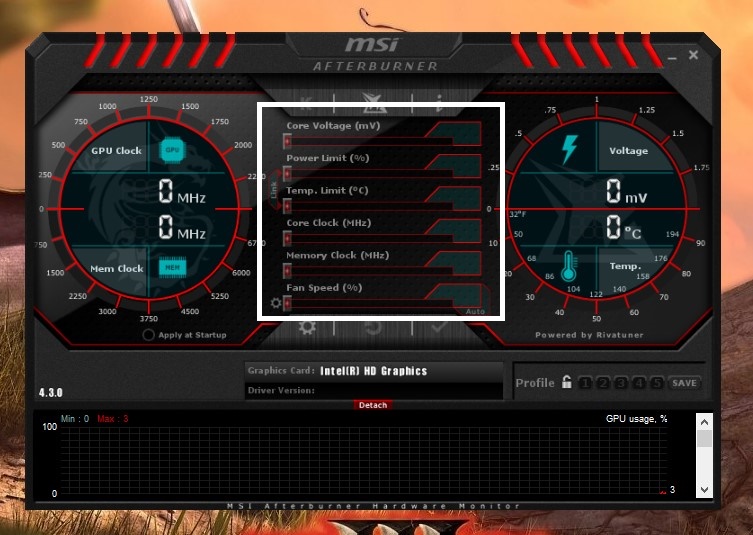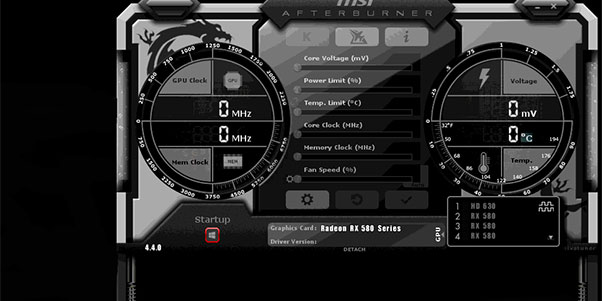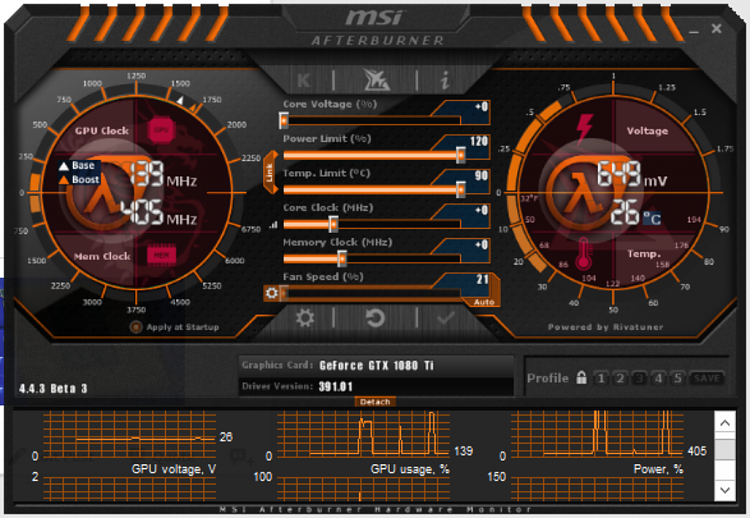

Beginner’s Guide to Overclockingįor a beginner, I would suggest not to tweak Core Voltage and Power Limit.

Laptop owners can use the below guide for overclocking. This is because few laptops have GPUs that cannot be overclocked (for example 940m). NOTE: In the case of most laptops, Core Voltage(mV), Power Limit (%), Temperature limit(☌) and Fan Speed (%) cannot be manipulated. Note than increasing fan speed increases the noise it generates. My suggestion to you is to increase the fan speed to maintain the temperatures below 85 ° C. Increasing fan speed will help you to run the GPU at an optimal temperature. This is mostly not affected by core voltage.įan Speed (%): When You overclock your GPU, it’s overall temperature increases. This has more impact on graphical applications like photoshop etc. Increasing Memory Clock is safer than increasing Core Clock. Memory Clock (MHz): This is the frequency of the VRAM of the GPU. This has more impact on gaming than the Memory Clock. Increasing Core Clock boosts performance and hence adds extra FPS. Do not let the Temperature Limit exceed 85 ☌ for a longer lifespan.Ĭore Clock (MHz): This is the speed of cores on the GPU. Temperature Limit(° C): This helps to regulate the temperature in which the GPU is running. Increasing the power limit increases the amount of power it can receive. This slider allows it to consume more power if it needs to achieve higher overclocks. Power Limit (%): your card has a set power that it is set to consume. I only change this when I want to go extreme OC.

I don’t change the core voltage when I OC my GPU, I just leave it at the standard it came. However, the higher you raise it, the higher you can overclock your card. The higher you raise it, the hotter your temperature becomes. The rest of the settings are up to you.Ĭore Voltage(mV): The core voltage adjusts your voltage in millivolts from the stock voltage of the card. Enable Unlock voltage control and Unlock voltage monitoring.This causes the afterburner to open in the background and apply the overclocked settings in the background for you automatically every time you start your computer. Click settings and check start with windows and start minimized.To remove stuff you do not need, just right click on the graph and go to properties and untick components you do not want to monitor. You can monitor various components like GPU temperature, RAM limit, CPU temperature, CPU clock in the graph section. The three buttons under fan speed scrollbar are Settings, reset and accept changes respectively. You can also see the voltage on the right-hand side and the temperature underneath it. The memory clock is the speed of the VRAM of the GPU.

The GPU clock shows the speed of the cores of the GPU. You can see the GPU clock on the left and side and underneath that is Memory clock.


 0 kommentar(er)
0 kommentar(er)
